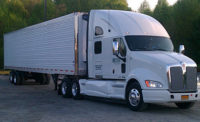Digital technologies and innovations are driving massive changes and improvements in supply chain. Meanwhile, digital disruption and continued globalization are sending customer service expectations through the roof and stretching supply chains to the farthest reaches of the planet – putting supply chains under more stress than ever before.
In this fifth annual survey report on supply chain innovation, MHI, Charlotte, N.J., and Deloitte Consulting LLP, New York, teamed up to better understand the critical shift toward next-generation (NextGen) digital supply chains, and the real-world impact of 11 key innovations on supply chain operations and strategies.
The 2018 MHI Annual Industry report, "Overcoming Barriers to NextGen Supply Chain Adoption," provides an up-to-date perspective on emerging supply chain trends.
"Early adopters are successfully combining NextGen supply chain technologies to improve speed and agility and increase efficiency and visibility," says George Prest, chief executive officer of MHI.
Eleven technologies (Blockchain, robotics and automation, predictive analytics, Internet of Things, artificial intelligence, driverless vehicles and drones, wearable and mobile technology, inventory and network optimization, sensors and automatic identification, cloud computing and storage and 3D printing) work together to create NextGen supply chains that are digital, on-demand and always-on. Eight out of 10 survey respondents believe these supply chains will be the predominant model within just 5 years.
The top technologies respondents say can be a source of either disruption or competitive advantage are:
• Robotics and automation (65%, up from 61% in 2017)
• Predictive analytics (62%, up from 57% in 2017)
• The Internet of Things (IoT) (59%, up from 55% in 2017)
• Artificial intelligence (53%, new category in 2018)
• Driverless vehicles and drones (52%, up from 30% in 2015)
Cloud computing and storage maintain the highest current adoption rate at 57%. Adoption is expected to grow to 91% over the next five years. Inventory and network optimization, now at 44% adoption, are expected to grow to 90% over the next five years.
Over the same time frame, predictive analytics is expected to reach an 82% adoption rate, followed by IoT at 79%, robotics and automation at 73%, blockchain at 54%, driverless vehicles and drones at 50% and artificial intelligence at 47%.
The Top 3 barriers to adoption of these technologies are:
• Making the business case for NextGen supply chain investments.
• Tackling the supply chain skills gap and workforce shortage.
• Building trust and security in digital, always-on supply chains.
To implement any of these technologies, firms need access to a skilled and increasingly digital supply chain workforce.
The top critical skills needed to compete in the NextGen supply chain, according to the survey, are strategic problem solving (49%), analytics/modeling/visualization (43%) and general business acumen and cross-functional knowledge (38%).
"Algorithms, automation, sensors, big data and artificial intelligence are dramatically changing what supply chain talent looks like, how to find it and retain it," adds Prest.
When it comes to cybersecurity, the sophistication of hackers and “threat actors” is the biggest risk (44%), followed by the lack of awareness of the threat within the organization (40%) and poor cybersecurity practices among suppliers (37%). As cybersecurity concerns grow, the demand for transparency at every level of the supply chain is skyrocketing, as consumers increasingly expect full information about the origin and history of the products they consume.
Blockchain’s unparalleled ability to enable transparent yet controlled data sharing in a way that is extremely reliable, efficient and highly encrypted provides a robust platform to tackle some of today’s toughest supply chain challenges, while providing an unmatched level of cybersecurity. This is where blockchain can be a huge supply chain differentiator.
The report also provides real-world case studies of NextGen supply chain technologies and recommendations for leaders in developing strategies to implement these innovations.
"The time is now to think big, but start small and act fast. You don't need to invest a lot to start testing these technologies," says Scott Sopher, principal and leader of the global supply chain practice at Deloitte Consulting.
"While the transition to NextGen supply chains is complex, inaction is not a strategy. Ignoring these important developments may leave your supply chain at a severe disadvantage in the future," adds Prest.
The findings in this report are based on survey responses from 1,100 manufacturing and supply chain industry leaders from a wide range of industries. Half of respondents hold executive-level positions such as chief executive officer, vice president, general manager or department head. Participating companies range in size from small to large, with 47% reporting annual sales in excess of $100 million and 10% reporting annual sales of $10 billion or more.


